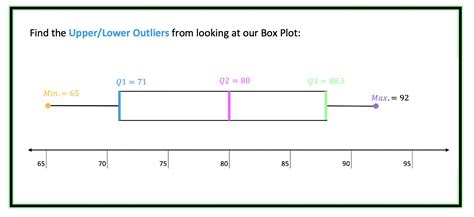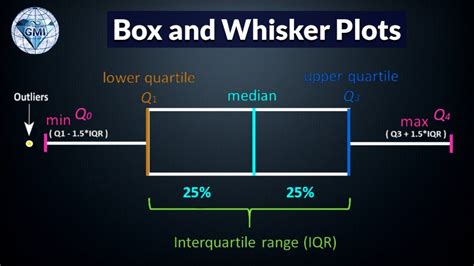distribution on box and whisker In descriptive statistics, a box plot or boxplot is a method for demonstrating graphically the locality, spread and skewness groups of numerical data through their quartiles. In addition to the box on a box plot, there can be lines (which are called whiskers) extending from the box indicating variability outside the upper and lower quartiles, thus, the plot is also called the box-and-whisker plot and t. Plug an appliance into an outlet fed by the circuit that the breaker you want to trip is serving. If there are existing lights, you can just turn one of those on as another option. Open the electrical panel (breaker box) and search for the breaker corresponding to .
0 · upper whisker box plot
1 · how to calculate whisker
2 · difference between box and whiskers
3 · box vs whisker plot
4 · box plot whisker boundary
5 · box and whiskers explained
6 · box and whiskers chart
7 · box and whisker plot example
$25.00
A box plot, sometimes called a box and whisker plot, provides a snapshot of your continuous variable’s distribution. They particularly excel at comparing the distributions of groups within your dataset.In descriptive statistics, a box plot or boxplot is a method for demonstrating graphically the locality, spread and skewness groups of numerical data through their quartiles. In addition to the box on a box plot, there can be lines (which are called whiskers) extending from the box indicating variability outside the upper and lower quartiles, thus, the plot is also called the box-and-whisker plot and t.What is a box plot? A box plot (aka box and whisker plot) uses boxes and lines to depict the distributions of one or more groups of numeric data. Box limits indicate the range of the central .Use a box and whisker plot to show the distribution of data within a population. They allow for users to determine where the majority of the points land at a glance. They are even more useful when comparing distributions between .
A boxplot, also known as a box plot, box plots, or box-and-whisker plot, is a standardized way of displaying the distribution of a data set based on its five-number summary of data points: the “minimum,” first quartile [Q1], median, .A boxplot, also called a box and whisker plot, is a graph that shows the dispersion and central tendency of a dataset using a five number summary. The dispersion — a measure of how spread out a data set is — includes quartiles and the .Box and whisker plots are a powerful tool for visually understanding the distribution of data. They offer a quick and informative way to see the spread of the data, identify outliers, and compare data sets from different groups.Box plots provide a concise and informative way to visualize the distribution of numeric data. They depict the five-number summary (minimum, first quartile, median, third quartile, maximum) and .
When we display the data distribution in a standardized way using 5 summary – minimum, Q1 (First Quartile), median, Q3 (third Quartile), and maximum, it is called a Box plot. It is also termed as box and whisker plot. In this article, we . In descriptive statistics, a box plot or boxplot (also known as a box and whisker plot) is a type of chart often used in explanatory data analysis. Box plots visually show the distribution of numerical data and skewness by displaying the data quartiles (or percentiles) and averages.A box plot, sometimes called a box and whisker plot, provides a snapshot of your continuous variable’s distribution. They particularly excel at comparing the distributions of groups within your dataset.
In addition to the box on a box plot, there can be lines (which are called whiskers) extending from the box indicating variability outside the upper and lower quartiles, thus, the plot is also called the box-and-whisker plot and the box-and-whisker diagram.What is a box plot? A box plot (aka box and whisker plot) uses boxes and lines to depict the distributions of one or more groups of numeric data. Box limits indicate the range of the central 50% of the data, with a central line marking the median value.Use a box and whisker plot to show the distribution of data within a population. They allow for users to determine where the majority of the points land at a glance. They are even more useful when comparing distributions between members of a category in your data.
A boxplot, also known as a box plot, box plots, or box-and-whisker plot, is a standardized way of displaying the distribution of a data set based on its five-number summary of data points: the “minimum,” first quartile [Q1], median, third quartile [Q3] and “maximum.” Here’s an example.A boxplot, also called a box and whisker plot, is a graph that shows the dispersion and central tendency of a dataset using a five number summary. The dispersion — a measure of how spread out a data set is — includes quartiles and the interquartile range.Box and whisker plots are a powerful tool for visually understanding the distribution of data. They offer a quick and informative way to see the spread of the data, identify outliers, and compare data sets from different groups.Box plots provide a concise and informative way to visualize the distribution of numeric data. They depict the five-number summary (minimum, first quartile, median, third quartile, maximum) and identify outliers. Box plots are valuable for comparing .

upper whisker box plot
When we display the data distribution in a standardized way using 5 summary – minimum, Q1 (First Quartile), median, Q3 (third Quartile), and maximum, it is called a Box plot. It is also termed as box and whisker plot. In this article, we are going to discuss what box plox is, its applications, and how to draw box plots in detail. Table of contents: In descriptive statistics, a box plot or boxplot (also known as a box and whisker plot) is a type of chart often used in explanatory data analysis. Box plots visually show the distribution of numerical data and skewness by displaying the data quartiles (or percentiles) and averages.A box plot, sometimes called a box and whisker plot, provides a snapshot of your continuous variable’s distribution. They particularly excel at comparing the distributions of groups within your dataset.In addition to the box on a box plot, there can be lines (which are called whiskers) extending from the box indicating variability outside the upper and lower quartiles, thus, the plot is also called the box-and-whisker plot and the box-and-whisker diagram.
What is a box plot? A box plot (aka box and whisker plot) uses boxes and lines to depict the distributions of one or more groups of numeric data. Box limits indicate the range of the central 50% of the data, with a central line marking the median value.
Use a box and whisker plot to show the distribution of data within a population. They allow for users to determine where the majority of the points land at a glance. They are even more useful when comparing distributions between members of a category in your data.
A boxplot, also known as a box plot, box plots, or box-and-whisker plot, is a standardized way of displaying the distribution of a data set based on its five-number summary of data points: the “minimum,” first quartile [Q1], median, third quartile [Q3] and “maximum.” Here’s an example.A boxplot, also called a box and whisker plot, is a graph that shows the dispersion and central tendency of a dataset using a five number summary. The dispersion — a measure of how spread out a data set is — includes quartiles and the interquartile range.
Box and whisker plots are a powerful tool for visually understanding the distribution of data. They offer a quick and informative way to see the spread of the data, identify outliers, and compare data sets from different groups.Box plots provide a concise and informative way to visualize the distribution of numeric data. They depict the five-number summary (minimum, first quartile, median, third quartile, maximum) and identify outliers. Box plots are valuable for comparing .


miscellanous metal fabricators in bloomington in

how to calculate whisker
These tree stand brackets have a total weight capacity of 2000 pounds, which provides additional support for constructing ladder racks, tree houses, and hunting platforms. EASY INSTALLATION: These deer blind brackets come with 14 pre-drilled holes in each bracket with 3 in lag bolts and washers, for easy installation.
distribution on box and whisker|box plot whisker boundary